News & Updates
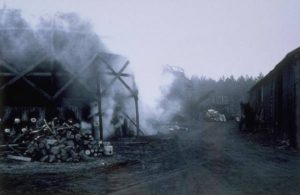
1938 Hurricane Fuels Charcoal Business – Who Knew?
The hurricane of 1938, which devastated the Quinebaug Forest, ended up driving the development of the charcoal industry in Union.
Read
Walt Dropo Stars Throughout New England
Few major league baseball players had rookie seasons as good as Walt Dropo’s while playing for the Boston Red Sox in 1950.
Read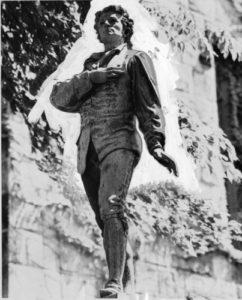
Nathan Hale Hanged in New York – Today in History: September 22
On September 22, 1776, the British hanged Revolutionary War soldier Nathan Hale, a school teacher from Coventry, Connecticut, for spying.
Read
William Eaton, a Peace Democrat and Civil War Opponent
This 19th century Connecticut politician took a controversial stand against a war that would divide the Union and decrease states’ rights.
Read
Thomas Hooker: Connecticut’s Founding Father
A powerful and popular preacher, Thomas Hooker led a group of Puritans out of Massachusetts in 1636 to settle new lands that eventually became the city of Hartford.
Read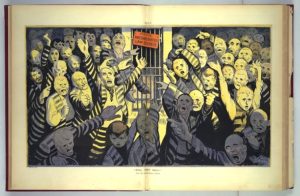
Art Young, Radical Cartoonist
One of the more controversial cartoonists of the early 20th century, Art Young lived much of his life in Bethel. Residents later founded the Art Young Gallery in his memory.
Read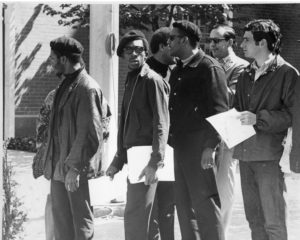
The Rise of the Black Panther Party in Connecticut
The Black Panther Party in Connecticut fought for an end to discriminatory legal and regulatory practices, often clashing with authorities to achieve their goals.
Read
Remembering Civil War Prisoners of War
Outside the Connecticut State Capitol building in Hartford stands a monument to the Connecticut prisoners retained at the Andersonville Prison during the Civil War.
Read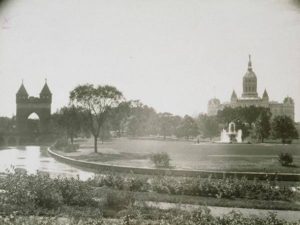
Soldiers and Sailors Memorial Arch – Today in History: September 17
In 1886, the Soldiers and Sailors Memorial Arch was dedicated to honor the 4,000 Hartford residents who served, and the nearly 400 who died, in the Civil War.
Read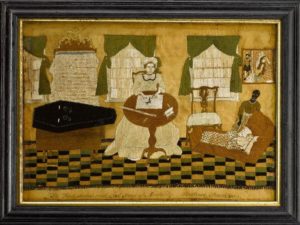
Prudence Punderson, Ordinary Woman, Extraordinary Artist: Needlework in Connecticut
Completed in the 1700s, “The First, Second and Last Scene of Mortality” is considered to be one of the most spectacular pieces of needlework in US history.
Read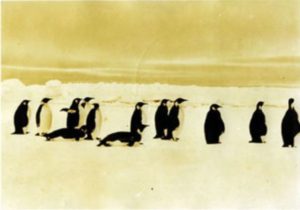
Sixty Degrees Below Zero: Connecticut Man Explores Antarctica
John Henry Von der Wall, a life-long resident of Bolton, took part in Rear Admiral Richard E. Byrd’s famed expeditions to the South Polar regions.
Read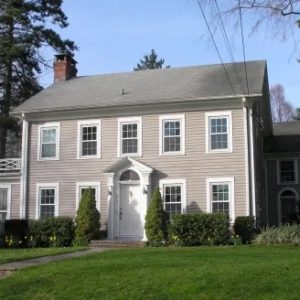
“Washburn Colonials”: Distinguished 1920s Homes Stand the Test of Time
Without formal training, Alice Washburn designed some of Connecticut’s most iconic Colonial Revival buildings of the early 20th century.
Read
World’s First Helicopter – Today in History: September 14
On September 14, 1939, the VS-300, the world’s first practical helicopter, took flight at Stratford, Connecticut.
Read
Putting Cleveland on the Map: Lorenzo Carter on the Ohio Frontier
From Connecticut, Lorenzo Carter became the first permanent settler of the community that became Cleveland, Ohio.
Read
Parachutist Snagged in Midair – Today in History: September 13
On September 13, 1966, Charles (Chuck) Alexander in Manchester, Connecticut became the first human to be captured by an aircraft in flight.
Read
Catharine Beecher, Champion of Women’s Education
Sister to two of the most famous figures of the 19th century–Harriet Beecher Stowe and Henry Ward Beecher–Catharine Esther Beecher achieved fame in her own right as an educator, reformer, and writer.
Read
From Aprons to Lab Coats: The Art and Science of Home Economics
In 1893 the Storrs Agricultural College (the precursor to the University of Connecticut) began training women in domestic science, the discipline that would later be called home economics.
Read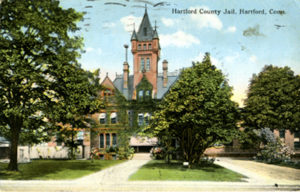
The Deplorable History of Hartford’s Seyms Street Jail
Abhorrent conditions characterized life in Hartford’s Seyms Street Jail for much of its century-long service to the county.
Read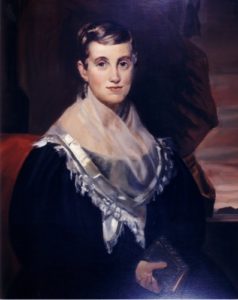
Prudence Crandall Fights for Equal Access to Education
A headmistress champions education for African American women and although forced to close her school in 1834, she helped win the battle for generations that followed.
Read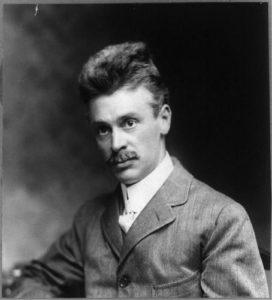
A Diversified Mind: Hiram Percy Maxim
No matter his field of endeavor—from automotive design to wireless radio—this multitalented creator had a hand in key developments of the early 1900s.
Read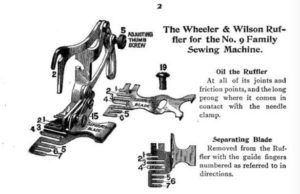
Wheeler & Wilson: A Stitchy Situation in Watertown
The Watertown firm of Wheeler & Wilson Manufacturing produced one of the most successful products of the late 19th century.
Read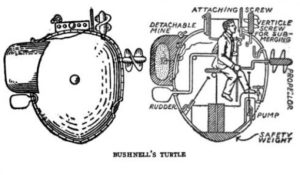
The Turtle Submarine – Today in History: September 6
On September 6, 1776, the first functioning submarine, called the Turtle, attacked the HMS Eagle anchored in New York Harbor.
Read
Raise a Glass to Winemaking in Connecticut
The Colony’s first settlers produced wine and spirits, but it would not be until the 1970s that Connecticut could grow and sell its harvest.
Read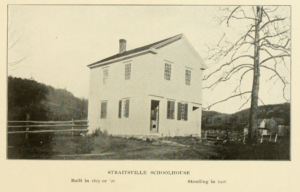
Child Labor vs. Schooling in 19th-century Naugatuck
The Naugatuck school system today consists of 11 public schools that provide a thorough contemporary education to over 4,000 students—but this was not always the case.
Read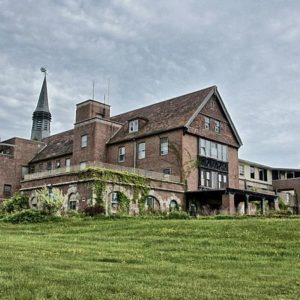
Seaside Tuberculosis Sanatorium: Waterford’s Contested Oceanfront Gem
Connecticut’s Seaside Sanatorium in Waterford is the site of a former nationally recognized tuberculosis hospital.
Read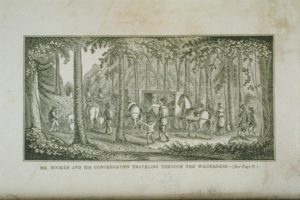
The Importance of Being Puritan: Church and State in Colonial Connecticut
Connecticut Protestants wanted to cleanse the church of what they saw as corruption, and to return to the simplicity and purity of early Christian worship.
Read
Martha Graham, Connecticut College, and the American Dance Festival
Martha Hill established the School of the Dance on the campus of the Connecticut College for Women in 1948, and hired such renowned instructors as Martha Graham.
Read
Serving Up Justice: Hartford’s Black Workers Organize
The earliest labor union for African American workers in Hartford appeared in 1902 with the birth of the Colored Waiters and Cooks Local 359.
Read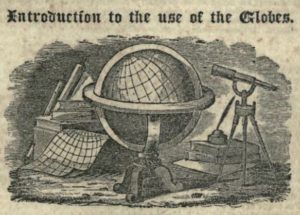
Connecticut Revolutionized Geography – Who Knew?
In 1828, Jesse Olney published A Practical System of Modern Geography, which revolutionized the way the subject was taught in schools during the 19th century.
Read
Theodate Pope Riddle Dies – Today in History: August 30
On August 30, 1946, Farmington’s Theodate Pope Riddle, one of the nation’s first successful woman architects, died at the age of 79.
Read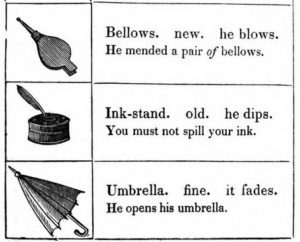
The Child’s Picture Defining and Reading Book by Thomas Hopkins Gallaudet
Thomas Hopkins Gallaudet The Child’s Picture Defining and Reading Book in 1830 while the principal of the American School for the Deaf in Hartford.
Read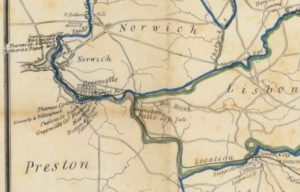
Lisbon Tunnel Completed – Today in History: August 28
The Norwich and Worcester Railroad built the first railroad tunnel in Connecticut, and one of the first in the nation, in the town of Lisbon in the 1830s.
Read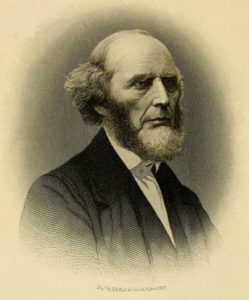
Charles Grandison Finney Spreads Revivalism and Education throughout the Mississippi Valley
Charles Grandison Finney was a revivalist preacher and educator born in Warren on August 27, 1792.
Read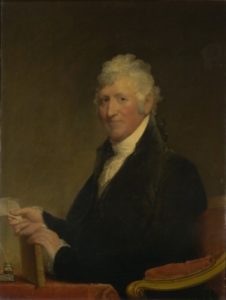
David Humphreys, Soldier, Statesman, and Agricultural Innovator
Despite an accomplished political career, this Derby-born gentleman of means is best remembered for introducing Merino sheep to North America.
Read
Rails and Paper Trails
The railroad first came to Connecticut in August of 1832 when the New York, Providence & Boston Railroad broke ground in Stonington.
Read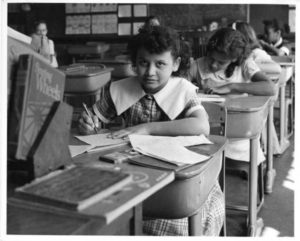
Five Minutes that Changed Connecticut: Simon Bernstein and the 1965 Connecticut Education Amendment
“There shall always be free public elementary and secondary schools in the state. The general assembly shall implement this principle by appropriate legislation.”
Read
The Rev. Amos Beman’s Devotion to Education, Social Activism, and New Haven
Amos Beman spent much of his life a religious leader and social activist in New Haven, fighting the stereotypes and other obstacles he encountered because of his race.
Read
Dinosaur Tracks Found – Today in History: August 23
On August 23, 1966, hundreds of dinosaur tracks were uncovered in Rocky Hill by a bulldozer operator.
Read
Roosevelt Rides in an Electric Car – Today in History: August 22
On August 22, 1902, President Theodore Roosevelt rode through the streets of Hartford in an electric automobile.
Read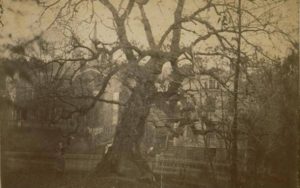
The Charter Oak Fell – Today in History: August 21
On August 21, 1856, the Charter Oak, a noted landmark and symbol of Hartford and Connecticut, fell during a severe wind and rain storm.
Read
A Pie Tin’s Soaring Sales
Tins used to hold pies at William Frisbie’s pie company in Bridgeport in the late 1800s reportedly provided the inspiration for Wham-O’s most popular toy, the Frisbee.
Read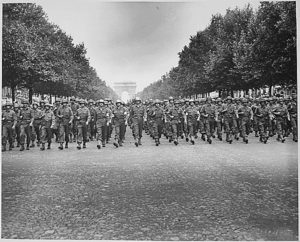
Connecticut Servicemen in the “Bloody Bucket” Division
Nicknamed the “Keystone Division,” the United States Army’s 28th Infantry Division came together in 1917 by combining units of the Pennsylvania National Guard.
Read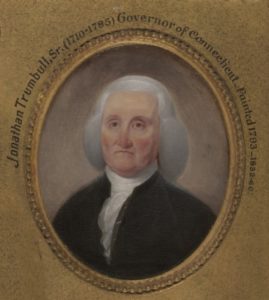
Governor Jonathan Trumbull Dies – Today in History: August 17
On August 17, 1785, Connecticut’s first governor, Jonathan Trumbull, died.
Read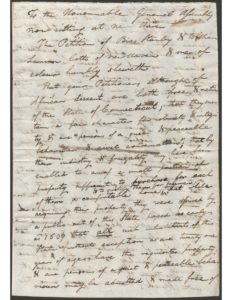
“’No Taxation without Representation’: Black Voting in Connecticut
In 1870, Connecticut ratified the 15th Amendment, but poll taxes, grandfather clauses, and other means of disenfranchising African Americans remained in place.
Read
Connecticut Draws the Curtain on Public Executions
Brooklyn’s status as county seat in 1831 resulted in the town hosting what is widely accepted as the last public hanging in Connecticut.
Read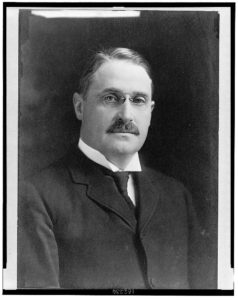
Senator Brandegee Stonewalls Women’s Suffrage
Senator Frank Brandegee of New London vehemently opposed progressive legislation at the national level, particularly when it came to the issue of women’s suffrage.
Read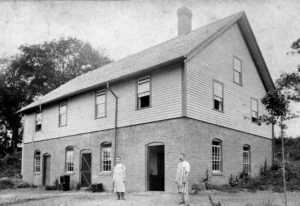
Andover’s Award-Winning Creamery
Started in 1886 by town residents, the Andover Creamery Corporation typified cooperative agricultural enterprises of the late 19th and early 20th centuries.
Read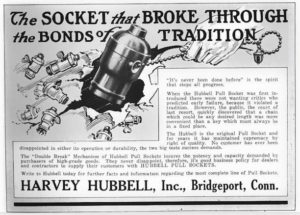
Hubbell’s Pull-Chain Electrical Light Socket – Today in History: August 11
On August 11, 1896, Bridgeport inventor and industrialist Harvey Hubbell patented a socket for incandescent lamps.
Read
Defending Connecticut: Fortifying New London Against the British in 1812
“Sir, You will immediately commence the repairs of the magazine at Fort Trumbull and the block house at Fort Griswold…,” wrote the US Secretary of War to a captain in New London.
Read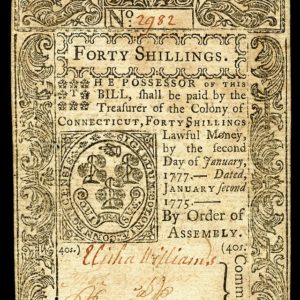
Connecticut’s Early Commercial Banks
After observing the financial success of commercial banks in Boston and New York City, wealthy elites in Connecticut pressured the Connecticut General Assembly to grant charters for privately owned commercial banks in Hartford, New Haven, and New London in 1792.
ReadMore Articles



